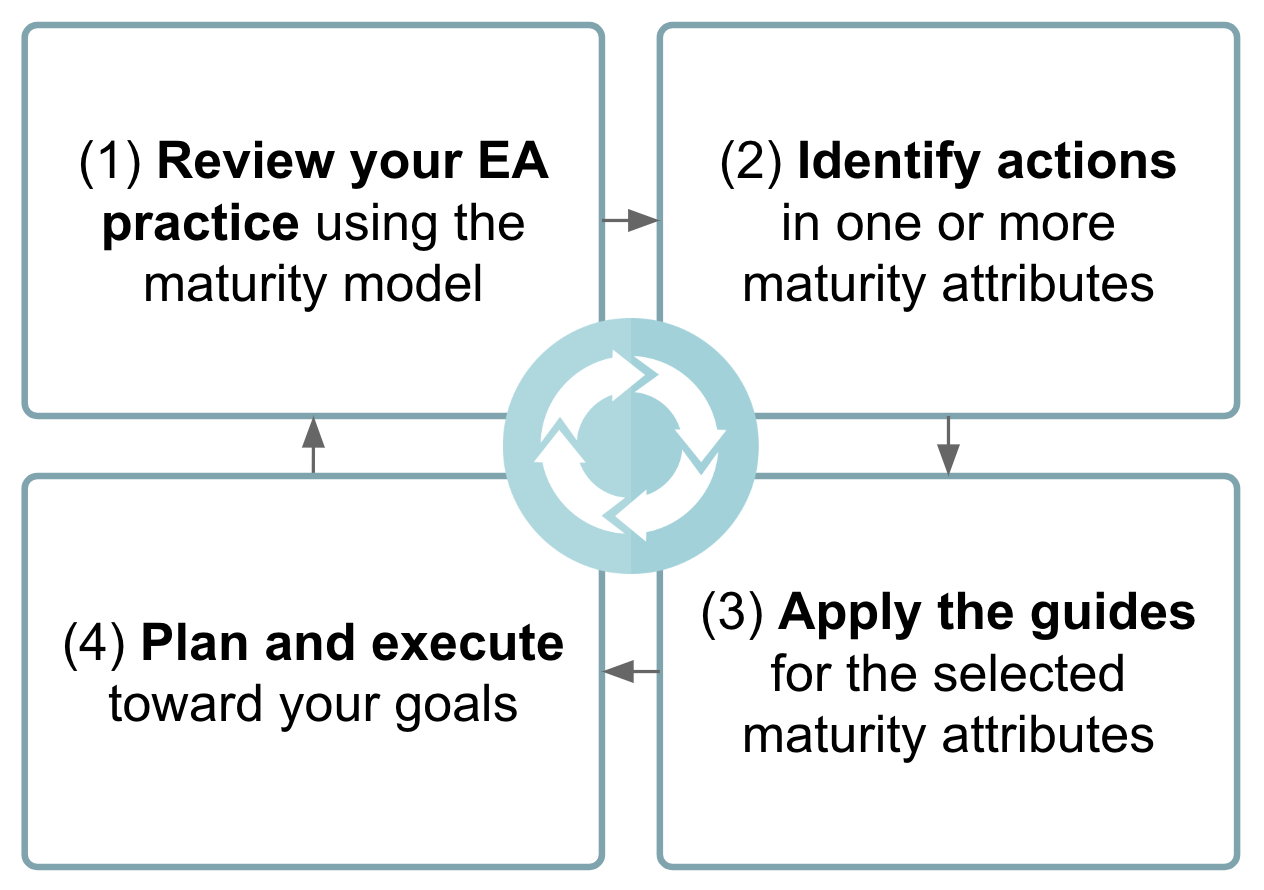This page suggests steps for reviewing your EA practice and continuing to mature it. Adapt these steps to your practice as needed.
1. Review Your EA Practice
Using the EA Practice Maturity Levels:
Very roughly, overall, what level best describes your EA practice as a whole?
Next, understand the maturity attributes:
The Scope Definition attribute describes how the scope of the EA practice is defined and evolved.
The Engagement attribute describes how the EA practice engages stakeholders based on its Scope.
The Impact Assessment attribute describes how the EA practice measures its performance within its Scope.
The Delivery attribute describes the means by which the EA practice delivers value.
The Management attribute describes how the EA practice manages itself.
In each attribute (row), what level (column) best describes your EA practice today?
You are likely to find your practice at a different level of maturity for different attributes.
2. Identify Actions
Review the descriptions of the five EA Practice Maturity Attributes. Each includes a table with potential Actions at each maturity level.
Identify maturity attributes in which you would like to improve your EA practice.
Within those attributes, identify actions that you would like to pursue.
Don’t feel constrained to the actions shown -- other actions may be appropriate to your organization.
3. Apply the Guides
Each of the five pages for EA Practice Maturity Attributes includes a Resources section linking you to materials others have tagged as useful for growing maturity in this area.
The Itana Member Contributions page lists all the resources in one place.
4. Plan and Execute
This is different for every EA practice, but can include:
Get stakeholder buy-in and support for your goals for change
Incorporate goals in your regular planning
Break goals into parts for execution
If needed, request funding or a project
Check in periodically to make sure goals remain feasible
Assess completion of each goal
Share your success with stakeholders

